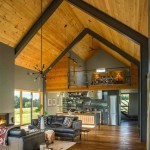Prayer Room Decor Ideas: Creating a Serene Sanctuary
The creation of a dedicated prayer room, or a designated prayer space within a home, offers a sanctuary for reflection, contemplation, and spiritual connection. This space should be conducive to focused thought and peaceful meditation, and its decor plays a significant role in achieving this atmosphere. Thoughtful decor choices can transform an ordinary room into an inspiring and comforting retreat, fostering a deeper and more meaningful prayer experience. This article explores several decor ideas to consider when designing a prayer room, focusing on elements that promote tranquility, reverence, and personal significance.
Color Palette and Lighting: Setting the Mood
The selection of colors for a prayer room significantly impacts the overall ambiance and mood. Soft, muted tones generally create a more calming environment than vibrant or overly stimulating colors. Consider hues such as light blues, greens, creams, and grays. These colors are often associated with peace, tranquility, and serenity, fostering a sense of stillness and focus. Avoid harsh or overly bright colors that might distract from the purpose of the space. Instead, opt for variations within a chosen color family to create depth and visual interest without overwhelming the senses.
Natural light is highly desirable in a prayer room, as it can uplift the spirit and create a connection with the natural world. If possible, position the prayer space near a window to maximize sunlight exposure. However, if natural light is limited, artificial lighting should mimic natural light as closely as possible. Soft, warm-toned lighting is preferable to harsh fluorescent lights. Dimmable lights offer flexibility, allowing for adjustments to the brightness depending on the time of day and personal preference. Candles, whether real or electric, can also add a warm and inviting glow, enhancing the sense of peace and reverence.
Consider incorporating layers of lighting to create a more dynamic and inviting space. Ambient lighting, such as recessed lights or a ceiling fixture, provides overall illumination. Task lighting, such as a reading lamp, offers focused light for prayer books or scriptures. Accent lighting, such as spotlights highlighting artwork or religious objects, can add visual interest and depth to the room.
Furnishings and Seating: Comfort and Functionality
The furnishings in a prayer room should be functional and comfortable, promoting extended periods of reflection and contemplation. Choose simple, uncluttered furniture that minimizes distractions and encourages a sense of peace. A comfortable prayer rug or mat provides a designated space for kneeling or prostrating. A meditation cushion can also be incorporated for those who prefer to sit on the floor. Seating options should be chosen based on personal preference and physical needs. A comfortable chair or bench can provide support for longer periods of prayer.
Avoid over-furnishing the space, as clutter can create a sense of anxiety and hinder focus. Instead, choose a few essential pieces that contribute to the overall functionality and aesthetic of the room. A small table or shelf can provide a place to hold prayer books, scriptures, or religious objects. Storage solutions, such as baskets or cabinets, can help to keep the room organized and free of clutter. Consider the scale of the furniture in relation to the size of the room. Overly large furniture can make a small room feel cramped and claustrophobic, while overly small furniture can get lost in a large room.
Textiles can add warmth and texture to the prayer room. A soft rug can provide a comfortable surface for kneeling or sitting. Throw pillows can add comfort to chairs or benches. Curtains or blinds can provide privacy and control the amount of light entering the room. Choose fabrics that are soft, natural, and easy to clean. Avoid overly ornate or distracting patterns.
Symbolic Decor and Personal Items: Fostering Connection
The incorporation of symbolic decor and personal items can deepen the spiritual significance of the prayer room and foster a stronger connection to faith. Religious artwork, such as paintings, sculptures, or calligraphy, can serve as a visual reminder of faith and provide inspiration during prayer. Select pieces that resonate personally and evoke a sense of reverence and awe. Scriptures, prayer books, and rosaries are essential items for many prayer rooms. These items should be readily accessible and displayed in a respectful manner.
Personal items that hold spiritual significance can also be incorporated into the decor. These might include family heirlooms, photographs, or objects collected during pilgrimages. These items can serve as reminders of loved ones, past experiences, and personal blessings. Plants can bring a sense of life and tranquility to the prayer room. Choose plants that are low-maintenance and thrive in low-light conditions. The greenery can create a connection with nature and promote a sense of peace.
Incense or essential oil diffusers can be used to create a calming and fragrant atmosphere. Choose scents that are associated with relaxation and meditation, such as lavender, sandalwood, or frankincense. However, use these items sparingly, as strong scents can be overpowering and distracting. The key is to create a space that feels personal, meaningful, and conducive to spiritual connection.
Minimizing Distractions and Enhancing Focus: The Importance of Simplicity
A critical aspect of designing a prayer room is minimizing distractions and enhancing focus. This principle underscores the importance of simplicity in decor choices. Avoid clutter, excessive ornamentation, and anything that might divert attention from the purpose of the space. A clean, organized environment promotes mental clarity and allows for deeper contemplation.
Technology can be a significant source of distraction. Therefore, it is advisable to minimize or eliminate electronic devices from the prayer room. If a phone or tablet is necessary for accessing scriptures or prayer apps, ensure that notifications are turned off to prevent interruptions. Consider using noise-canceling headphones to block out external sounds and create a more peaceful environment.
Soundproofing measures can also be taken to minimize distractions. Thick curtains, rugs, or soundproofing panels can help to absorb external noise and create a quieter space. Soft music or nature sounds can also be played to mask distracting noises and create a more relaxing atmosphere. Ultimately, the goal is to create a space that is free from distractions and conducive to focused prayer and meditation. This can be achieved through careful planning, thoughtful decor choices, and a commitment to maintaining a clean and organized environment.
Layout and Space Optimization: Maximizing Functionality
The layout of the prayer room significantly impacts its functionality and practicality. Efficient space optimization ensures that the room accommodates all necessary activities comfortably without feeling cramped or overwhelming. Consider the typical activities the prayer room will host, such as individual prayer, group meditation, or reading scriptures, and arrange the space accordingly.
In smaller spaces, vertical storage solutions are invaluable. Shelving units that reach up to the ceiling can maximize storage space without taking up valuable floor area. Wall-mounted shelves are also useful for displaying religious items or storing prayer materials. If the room is multi-purpose, consider using screens or dividers to create a designated prayer area that can be separated from other activities. This allows for a sense of privacy and focus during prayer time while still utilizing the space for other purposes when needed.
Ensure that there is adequate space for movement and that the furniture arrangement does not impede the flow of traffic. Pay attention to the placement of seating and prayer mats to ensure comfort and accessibility. Creating zones within the prayer room can also be beneficial. For example, a dedicated area for reading scriptures with a comfortable chair and good lighting, and a separate area for quiet reflection or meditation. This allows for different activities to be accommodated seamlessly within the same space.

30 Praying Room Ideas To Bring Your Ramadan More Beautiful Homemydesign Muslim Prayer Home Designs

Home Prayer Room Ideas

30 Praying Room Ideas To Bring Your Ramadan More Beautiful Homemydesign Prayer Muslim House Design

5 Steps To Creating An Ic Prayer Room In Your Home

Prayer Room Design House Home

Home Prayer Room Ideas Muslim Design And Decoration Namaz Abu Hashim

How To Create A Space For Worship At Home This Ramadan Muslim Girl

78 Best Prayer Room Design Ideas Home Altar

Meditation Room Ideas 25 Calm Spaces For Prayer Study Reflection

How To Decorate Ic Prayer Room







